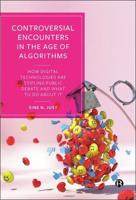Publisher's Synopsis
What is Software?
Software refers to a collection of instructions, data, or programs that tell a computer how to perform specific tasks. It includes:
- System Software: Operating systems (Windows, Linux, macOS), utilities, and drivers.
- Application Software: Programs designed for users, such as web browsers, office suites, and games.
- Programming Software: Tools for developers like compilers, debuggers, and Integrated Development Environments (IDEs).
Programming is the process of designing, writing, testing, and maintaining code that enables software to function. It involves:
- Algorithms: Step-by-step procedures to solve problems.
- Code: Written instructions using programming languages.
- Debugging: Fixing errors in the code.
- Procedural Programming (e.g., C, COBOL, FORTRAN)
- Code is structured as sequences of instructions (procedures).
- Uses loops, conditionals, and functions.
- Object-Oriented Programming (OOP) (e.g., Java, C++, Python)
- Uses objects and classes to model real-world entities.
- Principles: Encapsulation, Inheritance, Polymorphism, and Abstraction.
- Functional Programming (e.g., Lisp, Haskell, Scala)
- Emphasizes functions as first-class citizens.
- Avoids changing states and mutable data.
- Scripting Languages (e.g., Python, JavaScript, Ruby)
- Used for automation, web development, and quick tasks.
- Often interpreted rather than compiled.
Here's a mix of modern and historical languages, including the ones you mentioned:
1. COBOL (Common Business-Oriented Language)
- Year Created: 1959
- Purpose: Business, finance, and administrative systems.
- Key Features:
- Designed for readability (English-like syntax).
- Used in legacy banking and government systems.
- Highly structured and procedural.
- Still in use today for maintaining old systems.
- Year Created: 1957
- Purpose: Scientific, engineering, and numerical computing.
- Key Features:
- The first high-level programming language.
- Optimized for mathematical calculations and performance.
- Still widely used in scientific computing, aerospace, and simulations.
- Year Created: 1991 (Derived from BASIC)
- Purpose: Rapid application development (RAD) for Windows.
- Key Features:
- Event-driven and easy-to-learn.
- Uses a graphical user interface (GUI) builder.
- Replaced by VB.NET in the .NET framework.
- Purpose: Systems programming, embedded systems.
- Key Features:
- Low-level access to memory.
- Portable across different systems.
- Foundation for C++, Java, and many other languages.
- Purpose: General-purpose, OOP programming.
- Key Features:
- Extends C with object-oriented features.
- Used in game development, system software, and performance-critical applications.
- Purpose: Cross-platform applications (Write Once, Run Anywhere).
- Key Features:
- Uses the Java Virtual Machine (JVM).
- Strongly typed and OOP-focused.
- Widely used in enterprise applications, Android development, and web apps.










